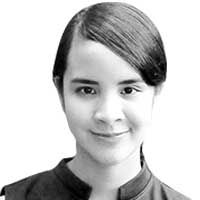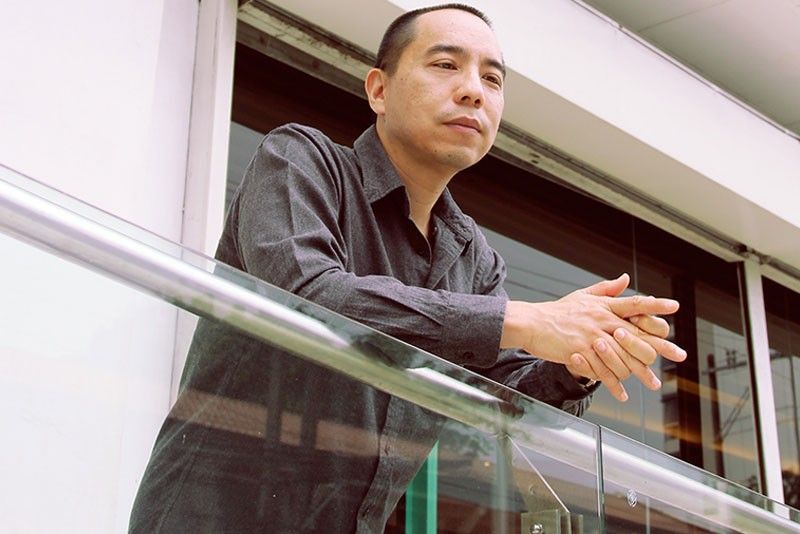Fact, fiction, and hallucinations: The sleepy world of Apichatpong Weerasethakul


It’s dark inside the Museum of Contemporary Art and Design, where Apichatpong Weerasethakul’s “The Serenity of Madness” is showing. One among several video installations, the soundless fury of fireworks plays repeatedly through the eye of a projector. In one corner, Tilda Swinton’s head daydreamed endlessly on a beachside. Walking into the exhibit is like succumbing to sleep: being lulled into a dark room and strolling freely from one dream, one fantasy, or one horror, to another.
“The Serenity of Madness,” Weerasethakul’s first solo show in Manila, is a traveling exhibition curated by Gridthiya Gaweewong and produced by Independent Curators International (ICI), New York. On view until May 14, the exhibit brings together the short films, video art, and archives of a Thai filmmaker known for his Palme D’Or-winning film Uncle Boonmee Who Can Recall His Past Lives (2010), among his other feature films.
Inside, two videos display the continuing onslaught of light, like the assault of bullets in a quiet room. Fireworks (2014) shows the intensity of sparklers in the temple of animal sculptures, and Nabua (2009) shows the fury of lightning flashes.
“I’m attracted to different kinds of illumination,” says Weerasethakul. “(They can signify) a celebration, or they can be something violent like a flash of light in the sky. They can be military flares, going up to see the hidden people in the forest, the communists.”
Weerasethakul was raised in the Northeastern city of Khon Kaen, which has played witness to Thailand’s long history of socio-political upheaval. “Historically, the Northeast was another empire,” he says. “The most obvious ones were those during the communist era in the ’60s to the early ’80s.”
Not surprisingly, both his feature films and experimental videos hint ever so subtly at Thailand’s struggles and beliefs, which were repressed due to censorship or military force. “Nabua,” for instance, which was created during the production of one of his feature films, recalls the site where the military had fought with comrade farmers for the first time, leading the latter to migrate to the forest and align themselves with communism.
“(The feeling of) living in Thailand can be applied to here,” he says. “On the surface, people seem content but deep down there is so much violence and madness going on through the abuse and the inequality and big gap of the economy… These stories are not taught in schools. It’s part of the propaganda,” says Weerasethakul.
Yet in light of his experimental films that feature even the most ambiguous snippets of Thailand’s political struggles, aren’t Weerasethakul’s films similarly subject to censorship? “My approach is really personal,” he counters. “My work is not protesting. They’re more about working with memory. My work is just learning, looking, listening.”
Khon Kaen was a sleepy city where Weerasethakul spent his childhood in a family of doctors. Hospitals served as slow-moving, non-ending tableaus of parasites and organisms, and theaters, as he put it, were “my escape, because there was nothing in that small town. Films were windows to the world.”
In shifting the focus from objective fact to personal memory, the filmmaker fashions the ever-fluid and disordered landscape of dreams, where the friction of fact and fantasy resonates like welcome static. He seems to say that there are things here that can be found only within the margins: haunting and hallucinations; past lives; folk tales and superstitions hovering over the animal sculptures of the Kaewku temple (“Fireworks,” 2014); memories recounted by ghost-like narrators in a historical, or possibly haunted, hotel (“Emerald,” 2007).
In this surrealistic and vaguely trippy universe, fantasy isn’t exactly escapism but remembering, reterritorialization, and revolt. In a conversation with Andrea Lissoni, Weerasethakul muses, “I am interested in the ways one subjects oneself to his or her subconscious, like in the case of many Isaan monks who embrace meditation as a way to liberate themselves. The act of closing one’s eyes for refuge, or for transporting oneself to another reality to ‘see’ something different is to me a very relevant mechanism in our contemporary landscape. It’s a kind of revolt.”
Sleep is a powerful phantasm. When stories are snuffed out from reality’s so-called official versions, they find residence in the margins alongside other dreams, ghosts, and superstitions, accessible by way of fantasy or, simply, falling asleep.
Characterized by temporal shifts, the non-linear format of experimental films allows the audience to project their own views and memories into the film, unlike in mainstream cinema where the viewer is often simply at the passive end, being fed with a fixed and unchanging storyline. Influenced by Marcel Duchamp, Andy Warhol, Manny Oliveira, and Dominique Gonzalez-Foerster, Weerasethakul is fascinated by how these works “(change our) way of looking. All simply look and give freedom to look.” It breaks traditional cinematic conventions, just as the form attempts to free the viewer and the medium.
“The reason I’m very interested in history is my actors, I only choose to work with people who have experience that I don’t have. I absorb their memory,” says Weerasethakul. In making videos as in the case of “Nabua” (2009), Weerasethakul asks the sons of massacred farmers to write songs and tell stories of loss, and role-play their elders.
“When I was young, I would escape through the movies,” he says. “Now, I escape by making my own.” As the eye of the camera, Weerasethakul establishes the self as subject, beholder, and director. Light — as fireworks and military flares, life and death — is the flickering eye of the film projector, the eye of the director illuminating memory’s forgotten regions. Here, madness is the mingling of fact, fiction, and hallucinations — a landscape we escape to whenever we fall asleep, or something we experience every day. In this exhibit, fantasy is valid when reality itself is mad.



















